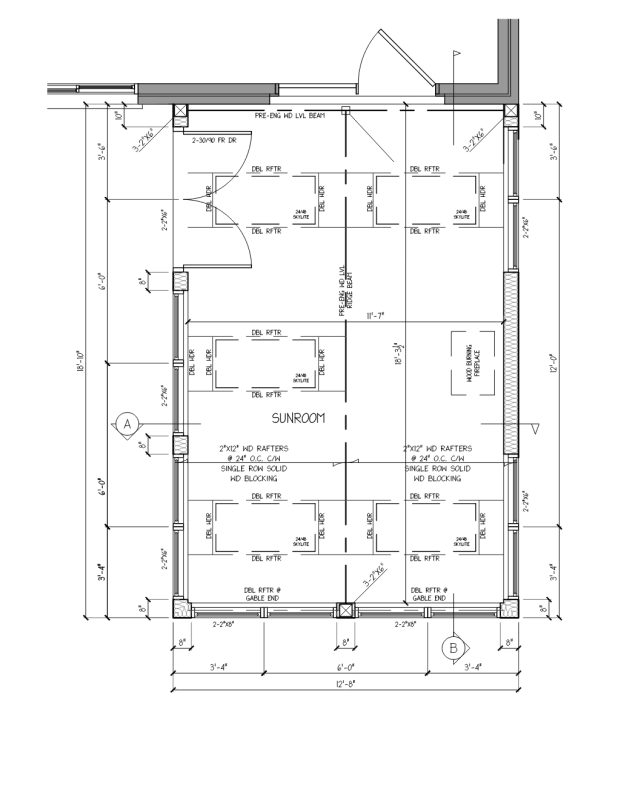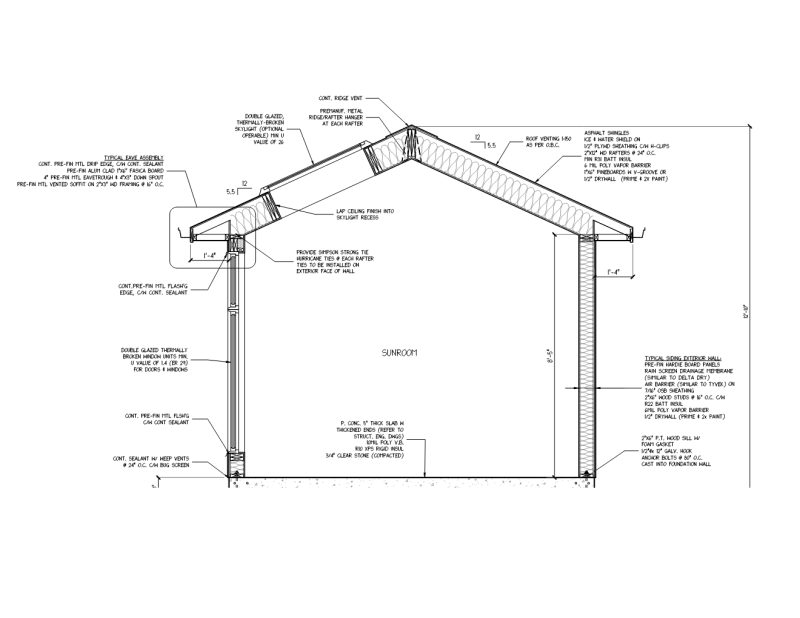This seems like an example of a house extension that requires a moment frame. It is a small extension though and I am not sure if you think it is so small that it doesn't require one.
The way I analyze it is that it is braced to the existing structure on the north end so that wind from the east and west direction on that end are not a concern and wind from north and south directions are not a concern anywhere. What I am concerned with is wind from east and west direction on the south end.
Do you analyze it in the same way? Or do you find that the roof diaphragm would be strong enough to bring all lateral forces back to where it is braced back to the house? How would you check that?
Pictures attached:


The way I analyze it is that it is braced to the existing structure on the north end so that wind from the east and west direction on that end are not a concern and wind from north and south directions are not a concern anywhere. What I am concerned with is wind from east and west direction on the south end.
Do you analyze it in the same way? Or do you find that the roof diaphragm would be strong enough to bring all lateral forces back to where it is braced back to the house? How would you check that?
Pictures attached:


